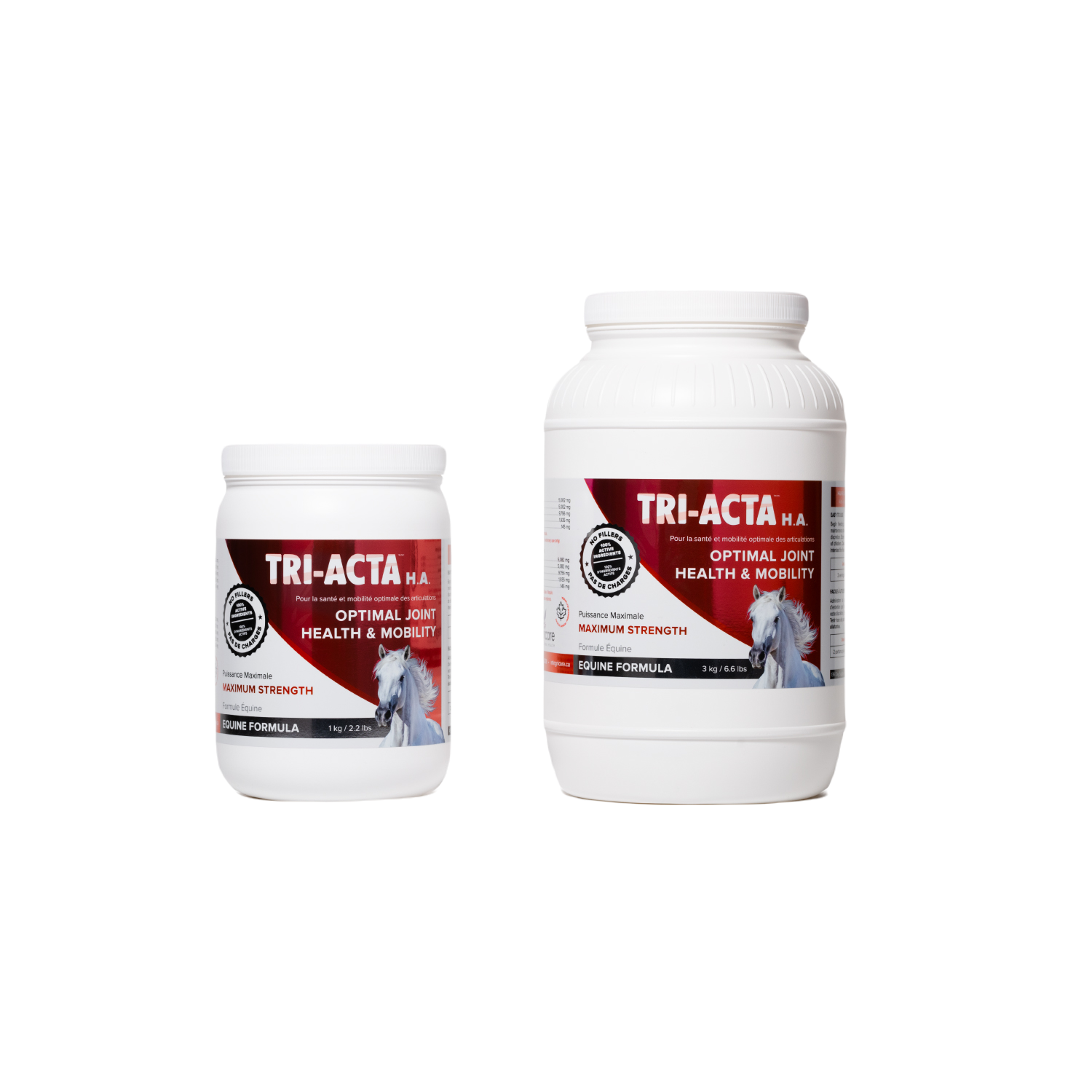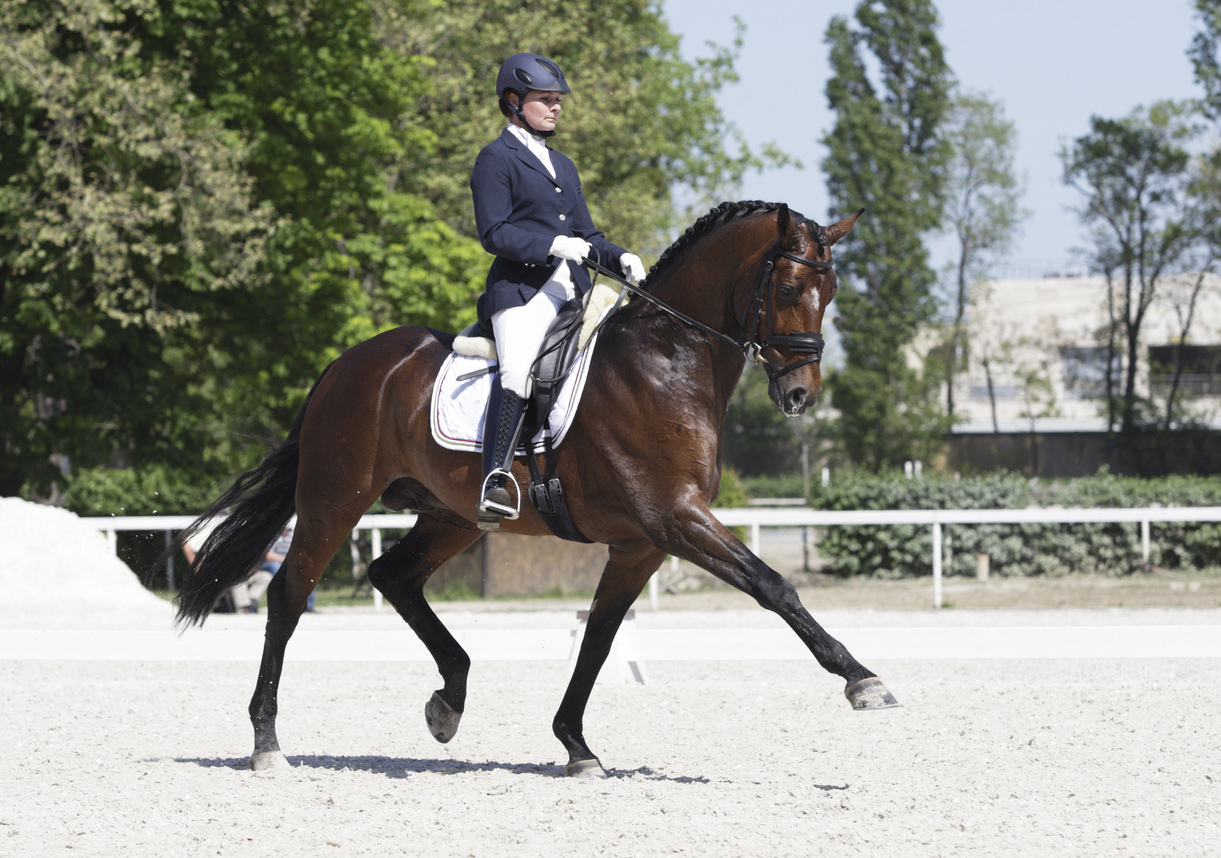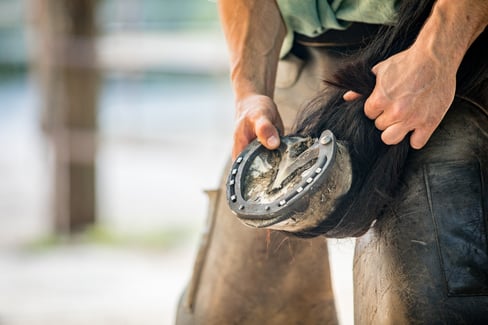Table of Contents
Horse dressage is an intricate dance between a rider and their horse. Fondly referred to as ‘horse ballet,’ dressage horse is a beautiful equestrian sport demonstrating the sophistication of a balanced, harmonious partnership between a horse and its rider.
In this article, we take a closer look at this fun sport, unravel what dressage horse is and how to get started with horse dressage training.
What is Horse Dressage?
Originating from the French word dresseur –meaning to train–horse dressage is viewed as the highest form of horse training. It involves a horse performing a set of predetermined movements that are then scored according to how well the horse executes them.
How to Get Started With Training a Horse Doing Dressage
Horse dressage training aims to get your horse to respond to your aids. Aids are generally built into movements, which are enhanced as the horse progresses through training. Eventually, a horse is expected to gain three systematic, flexible, and well-balanced gaits:
- Four-beat walk without suspension
- Two-beat trotting with momentary suspension in between diagonal beats
- Three-beat canter followed by suspension
To play the role of horse dressage training, a horse and its rider must follow certain rules and guidelines according to the country that the training is conducted in that help regulate the sport.
Clothing and Equipment
Dressage horse training is simply a rehearsal for a dressage test or competition. Thus you and your horse must have the right clothing and equipment for the exercise.
Dressage Clothing
- Shoes -Tallriding boots or paddock boots with complementing gaiters are recommended. The boots should be black. For competitions, riders should avoid decorated boots or fringed gaiters.
- Legwear - Breeches in beige, white or cream are permitted. Breeches should coordinate with riders jacket.
- Gloves - Riding gloves are often recommended for dressage horse riders. In competitions, the gloves must be beige, white, cream, or black.
- Shirt, Stock, and Tie - For competitions, a cream or white shirt is mandatory. A tie or stork must also be worn during a horse dressage test. For male riders, a collared shirt is recommended.
- Riding Jacket - Usually a short jacket made from rough wool and patterned fabric, the riding jacket is the first essential piece of clothing the rider must have. It should have muted or greyed colors, without any bold or elaborate patterns. However, finely drawn stripes are often permitted.
- Equestrian body protectors and vests - These are protective vests worn by riders. They are used as safety gear to protect riders from injury, for example, from falling off the horse, horse kicks, or a horse stepping on them should they fall.
- Helmet - An approved helmet is a must-have in training and competition. It is often black or navy or matches the rider’s uniform color.
Dressage Equipment
- Dressage saddle and saddle pad - A saddle for dressage is mandatory for all dressage tests and events. It often comes in black and brown colors. It features long flaps, a large block, and a deeper set rider seat. The saddle can have additional features, such as longer knee blocks depending on the brand. Saddle pads, on the other hand, come in white or subtle colors. Decorated saddle pads with huge logos are not allowed in dressage competitions.
- Dressage girth - Used to attach the saddle to the horse. A dressage girth is unique because it has a shorter girth which provides closer contact between the rider and the horse.
- Stirrups - These are iron rings that support the foot of a rider. The food must not be fully or partially enclosed and should not be attached to the stirrup.
- Snaffle bridle and bit - A snaffle bit is a part of the bridle that sits in a horse’s mouth. It can be one solid piece, or several pieces joined together. When the reins are pulled, the snaffle bit puts pressure on the mouth to communicate specific instructions for the horse to follow. A snaffle bridle is a single-rein bridle that holds the bit. Riders can dress their horses in decorated bridles.
- Spurs - Are metallic tools attached to the heel of training boots. They signal a horse to move forward and are worn as a matching pair. In dressage horse training, they are used as a backup to natural aids. They are also used to give precise aids throughout training movements.
- Equine leg wraps and boots - These are worn on a horse’s legs to protect them from injury by preventing the occurrence of ligament strains and splints. Though these are great for horse training, they are not allowed during horse dressage competitions.
Dressage Rules
The rules and regulations governing horse dressage training and competitions are set by the governing body FEI. In general, dressage rules provide detailed information for competitors including but not limited to:
- What riders and horses are allowed to wear
- How to enter and exit the arena
- What the judges are looking for in the arena
- How to qualify for each level of competition
These rules may vary depending on the level of competition and the organizing country. It is important to read and understand dressage rules before engaging in training or competitive horse dressage.
Arena
This is an enclosed rectangular area where the dressage test is done. The dressage arena can be indoors or outside, and the surface can be covered in sand or grass. It can be small or standard in size. The arena is adorned with special alphabetical letter markings. These letters are used to indicate where each dressage movement is performed.
|
Arena type |
Size |
Markings |
|
Small |
20m x 40m |
A-K-E-H-C-M-B-F |
|
Standard |
20m x 60m |
A-K-V-E-S-H-C-M-R-B-P-F |
On both types of arenas, the horse enters from point A. In lower-level competitions, the smaller arena is used, while the standard-size one hosts higher-level dressage competitions like the Grand Prix.

Levels of Horse Dressage Competition
There are five levels of dressage horse competition defined by a specific set of movements and maneuvers. As competitors progress from one level to the next, each level increases in complexity, level of skills, riding knowledge, and training required.
|
Level |
Expected skill |
Maneuver |
|
Training (Introduction) |
Contact, Suppleness, Rhythm |
|
|
Novice (First level) |
Rhythm, Suppleness, Contact and connection, Impulsion |
|
|
Elementary (second level) |
Rhythm, Suppleness, contact and connection, Impulsion, Early Collection |
|
|
Third (Medium level) |
Rhythm, Suppleness, Contact and connection, Impulsion, Straightness, Collection |
|
|
Fourth (Advanced level) |
Rhythm, Suppleness, Contact and connection, Impulsion, Straightness, Full Collection, Piaffe, Passage |
|
Dressage Scoring
Each movement in a dressage test is judged and scored out of 10. Zero is awarded for a movement not done, while 10 is considered excellent. When the performance is done, the scores are totaled together, then penalty marks are subtracted before converting the final score into a percentage. Judges can also award half marks where necessary.
In addition, some categories have collective marks which are scored out of ten. They are then doubled and added to the final score. Collective marks can be awarded for:
- Effective use of aids
- Balanced rider position and correctness
- Horse balance and correct movement performance
- Responsiveness and calmness of horse
- Controlled Impulsion
A score of 65% is considered good enough for a rider to advance to the next level.
What is a Dressage Horse Test and How to Prepare for it?

Credit: susanjsticklephotography
The Dressage horse test is an equestrian sport where a rider and their horse are expected to perform precise movements. The dressage horse test is performed in a particular area marked with different alphabetical letters at key spots.
In addition to performance, a dressage horse is also judged on appearance. A horse in dressage has its mane braided and hooves polished, as well as a smooth and well-combed tail.
To be ready for a dressage horse test, a rider, and their horse must practice and master the scales of the test and the expected moves for each step. To prepare for the test, a horse should be trained through the dressage training pyramid.

Scales of the Test
There are different scales of the horse dressage test, and each has specific movements that a horse in dressage is expected to perform. The scales build into each other according to the training pyramid as well as the level of competition.
Rhythm
According to the international body governing equestrian sports, FEI, rhythm refers to the regularity of beats in all paces. Regularity is the correct order of footfalls, while tempo refers to the speed of the rhythm. Rhythm is the first or most basic scale-level training.
A good rhythm contains regular beats, the correct pattern of footfalls, and a consistent tempo.
|
Gait |
Number of Beats |
Footfall |
|
Walk |
Four |
|
|
Trot |
Two |
suspension |
|
Canter |
Three |
|
|
Rein-back |
Two |
|
A well-trained dressage horse should move forward confidently with a consistent rhythm between gaits.
However, a horse can have poor rhythm due to several reasons including:
- A poorly fitted saddle brit or bridle can pinch or rub the horse the wrong way, causing discomfort
- Mental and physical tension. A horse that is not relaxed cannot maintain a consistent rhythm or tempo
- Limb pain. A dressage horse experiencing pain in a limb joint cannot concentrate on keeping up with the rhythm. Equine supplements are crucial in this area for horse injury and prevention.
A good rhythm helps your horse feel relaxed, balanced, and confident, resulting in better communication between rider and horse as well as helping to have a more coordinated and synchronized performance.
Suppleness
A horse doing dressage must display suppleness (the looseness and flexibility of the horse’s mind and body) by easing into the rider’s instructions and aids without hesitation or apprehension.
Suppleness helps a horse to move naturally with a swinging gait, a lifted and rounded backside supported by the hindquarters.Joint supplements, like TRI-ACTA H.A. for Equine can help the viscosity of the joint fluid This leads to an improved rhythm and contact.
A dressage horse is judged on four levels of suppleness:
|
Level of suppleness |
Description |
|
1. Mental suppleness |
|
|
2. Joint suppleness |
|
|
3. Longitudinal suppleness |
|
|
4. Lateral suppleness |
|
Contact
The connection and harmony between a rider’s hand and their horse’s acceptance of a bit in their mouth is called contact. Quality contact is seen when a horse moves forward steadily into a rider’s aids seeking contact with the rider’s hand. This causes a horse to round his posture and stretch forward onto the bit.
A relaxed horse with good contact will have a loosened jaw chewing gently on the bit without sticking out his tongue. With proper training, a horse learns to accept contact and responds to aids from the reins as well as the rider’s legs. This helps maintain easy elastic contact and promotes harmony between rider and horse.
Impulsion
The controlled transmission of propelled energy or thrust from the hindquarters of a horse to push it forward in an athletic maneuver is called impulsion. A horse with good impulsion is evaluated by how gently they move and swing its back under the guidance of the rider's contact and driving aid.
Creating more impulsion is not always equal to more speed, but the generation of more energy, the willingness of the horse to move forward, the flexibility of the horse’s gait, and increased engagement.
To create the right impulsion, a dressage horse must first be in rhythm, relaxed or supple, and in consistent contact with the rider. In addition, the horse must be able to correctly implement a half-halt by shifting more weight on its hind legs. Lateral movements and transitions are great exercises to help improve impulsion.
Straightness
Much like how humans are right or left-handed, horses can prefer bearing weight on one side of their body or the other. Straightness is achieved when a horse’s forelimbs are in straight alignment with its hindlegs. This indicates a balanced horse able to bear equal weight on both hindquarters.
Straightness for dressage horses is essential for two reasons:
- It promotes equal weight bearing on the horse’s joints and muscles. This enhances the longevity of your horse by ensuring equal wear and tear.
- It helps a horse in dressage achieve collection.
There are two steps you can take to help your horse achieve straightness:
- Ensure you ride in alignment to his spine by bearing equal weight on the seat bone and stirrups. Align his back and front by ensuring his neck is in line with the spine
- Straighten the horse’s back by making his back legs follow into the hoof prints of the front legs
Collection
The horse’s ability to re-balance weight is called collection. A horse in collection will have a more engaged and active hindquarter while the forehand and shoulders are higher and fluid.
Achieving a complete collection takes years of training and is considered to be the epitome of horse dressage.
Collection serves several performance, and health benefits for a horse including:
- Improves mobility and makes it easier to maneuver your horse into different training movements
- Enhances and helps extend a horse’s natural pace by improving suspension, making the canter and trots more flexible
- A horse in collection is well balanced and able to perform intricate movements gracefully
- Collection makes a horse more pleasant and gratifying to ride
How Do You Groom Your Horse for Dressage?
Your horse should get extra special treatment and a complete grooming session before any competition. Having a suitable horse grooming kit is vital in ensuring that your horse is looking their best and in top-notch condition.
Advantages of Horse Grooming

Treating your horse to a grooming session is like giving him a day at the spa, you want him to feel his best, and you want him to perform his best.
Your horse benefits from grooming in several ways:
- It is an excellent way to bond with your horse. It gives you one-on-one time as you take care of their coat
- Constantly grooming your horse keeps them in good shape. It is also an opportunity to observe your horse and identify any issues requiring medical attention
- Grooming helps improve oil production and blood circulation. This results in a shinier and healthier-looking coat
While it is important to groom your horse daily as well as before and after every ride, giving him a special grooming session before a competition will help him feel his best. A horse that is rarely groomed might accumulate dirt on their coat, making them feel irritated and can even cause sores on the skin.
When preparing for a horse dressage competition, give your horse proper grooming a week or a few days before. Your grooming session should include mane pulling and trimming and occasionally a full body clipping.
The second step is to give your horse a full body bath using good-quality shampoo. Gently rub your horse's entire body. If needed, you can do some touch-up clipping around the ears, bridle path, or muzzle.
Because dressage horse is such an intricate sport, it is essential to follow a step-by-step guide in grooming your horse.
1. Curry Comb Your Horse
Use the comb to brush through your horse's coat gently, especially around the horse's joints, legs, shoulders and hips. Brush in a circular motion, ensuring you cover every inch of the horse’s body.
This is a good opportunity to look out for any skin wounds or lesions and examine the overall health of the horse's coat and skin.
2. Brush the Coat
The second step is to brush the horse’s coat. Use a stiff brush to eliminate any debris you may have missed. Brush the horse in the direction of hair growth , ensuring you whisk dirt away from the coat.
Follow the stiff brushing with a soft brush to finish up the brushing session. A soft brush is usually shorter with more gentle bristles. Remember to touch up the ears, face, and throat. Remember to avoid grooming products in the saddle area so your saddle doesn't slip and shift during the performance.
3. Hoof Care
Proper hoof care is critical in ensuring that your horse is up to the task for dressage horse competition. Establish a daily regimen that allows you to ensure your horse’s hooves remain in top condition.
After thoroughly cleaning the hooves, apply dressing or conditioner to make them look shiny and clean. Other activities to help maintain healthy hooves include:
- Regular trimming
- Ensuring proper shoeing
- Protecting the hooves during transportation
- Providing a well-balanced and complete diet
- Providing horse supplements such as joint care supplements, hoof and coat supplements
A good quality supplement should contain 100% pure active ingredients with no artificial additives or fillers. TRI-ACTA for Equine is an excellent horse supplement to help keep your horse's joints healthy and mobile. For equines in highly competitive sports like horse dressage, TRI-ACTA H.A. provides an extra boost because it contains hyaluronic acid, which further helps lubricate the joints in horses that participate in strenuous activities.
TRI-ACTA H.A. for Equine
Our maximum strength formula is perfect for horses that are ageing, experiencing arthritis and stiffness, are in training and competition, or under a heavy workload.

As a daily hoof care activity, use the hoof pick to dislodge stones, mud, or debris that might be stuck in the hooves. Also, carefully examine the hooves to ensure they are in good condition. Be on the lookout for swelling, cracks, thrush, or abscesses, as these could indicate an underlying problem like horse laminitis.
4. Brush the Tail and Horse Mane
It is important to brush through the tail and mane gently. Where needed, use a liquid detangler to make it easier to brush through the tail hair. Be sure to not use detangler in the mane because it can make braiding tricky.
When grooming the mane, gently brush it to the horse's right side while pulling out any stray hairs. Section out the strands into manageable parts and brush from the bottom to remove the dander that might be trapped underneath. Don't forget to check the tailbone and mane for ticks when performing daily grooming activities.
5. Clean the Dock, Ear, Muzzle, and Eyes
With a clean damp cloth, clean the area at the top of your horse's tail (dock). Wipe around the tail and ensure you get rid of any debris hiding under there.
Next, take another clean, damp piece of cloth and wipe it around the horse’s ears. Be gentle since some horses may not like their ears being cleaned. Ensure you eliminate any debris or dirt lodged in the ears since it can make your horse uncomfortable.
Remember to also clean in between the jaw bones as well as under the belly. These two places are often a favorite for bugs to hide.
Finish off with cleaning the face. Remove any dirt from his eyes as well as the muzzle. Don't forget to give your horse a final wipe across his face to eliminate any sweat before you enter the arena.
Summary
Maintaining a sport or performance horse is an engaging activity that demands discipline and consistent efforts. While dressage horse entertains spectators, the rider and their horse invest a lot of time and energy in ensuring a harmonious and elegant performance.
Because a horse doing dressage engages their limbs a lot, there is wear and tear with time. To keep your equine in sterling condition, invest in good quality supplements for hoof, coat, and joint care. Dressage horse is a highly competitive sport. Any rider who wants to make an impression must maximize every competitive advantage to win. TRI-ACTA for equines is a great companion for enhancing performance, preventing injury, and promoting a quick recovery from injuries. This means a rider can make the best of training days.
Visit our horse supplements page for more about TRI-ACTA and info on how to keep your equine healthy and feeling their best.
TRI-ACTA H.A. for Equine
Our maximum strength formula is perfect for horses that are ageing, experiencing arthritis and stiffness, are in training and competition, or under a heavy workload.

Newsletter Signup
Subscribe to our newsletter to receive the latest news and exclusive offers.
.jpg?height=2000&name=Cliick_Integricare-DISPLAY-REVISEDV2%20(1).jpg)
Proactive & Therapeutic Joint Supplements
When given daily, Integricare joint supplements recover bone and joint injuries faster and help prevent mobility injuries from happening in the first place.











